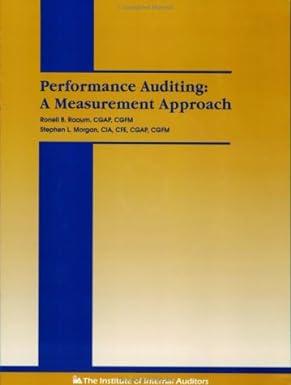Question
Question one The owner of a small business selling and repairing cars which you patronize has just received a copy of his accounts for the
Question one The owner of a small business selling and repairing cars which you patronize has just received a copy of his accounts for the current year. He is rather baffled by some of the items and as he regards you as a financial expert, he has asked you to explain certain points of difficulty to him. This you have readily agreed to do. His questions are as follows: a. What is meant by the term assets? My mechanical knowledge and skill is an asset to the business but it does not seem to have been included. b. The house I live in cost GHS30,000 five years ago and is now worth GHS60,000, but that is not included either. c. What is the difference between fixed assets and current assets? d. Why is the bank and cash figure in the balance sheet different from the profit for the year shown in the profit and loss account? e. I see the profit and loss account has been charged with depreciation on equipment etc. I bought all these things several years ago and paid for them in cash. Does this mean that I am being charged for them again? You are required to answer each of his questions in terms which he will be able to understand. Question two a) What is the meaning of depreciation? b) Give three reasons why depreciation may occur. c) Name two methods of depreciation. d) In what way do you think the concept of consistency applies to depreciation? e) Since the calculation of depreciation is based on estimates, not facts, why bother to make the calculation? f) Explain briefly why you think that the calculation of depreciation is based on estimates. g) If depreciation was omitted, what effects would this have on the final accounts? h) Some assets increase (appreciate) in value, but normal accounting procedure would be to ignore any such appreciation. Explain why bringing appreciation into account would go against the prudence concept. Question three a) A photocopier costs GHS23,000. It will be kept for four years, and then traded-in for GHS4,000. Show the calculations of the figures for depreciation for each year using (a) the straight line method, (b) the reducing balance method, for this method using a depreciation rate of 35 percent. b) A printer costs GHS800. It will be kept for five years and then scrapped. Show your calculations of the amount of depreciation each year if (a) the reducing balance method at a rate of 60 per cent was used, (b) the straight line method was used. c) A bus is bought for GHS56,000. It will be used for four years, and then sold back to the supplier for GHS18,000. Show the depreciation calculations for each year Question four Businesses often create a provision for doubtful debts. a) Of which concept (or convention) is this an example? Explain your answer. b) What is the purpose of creating a provision for doubtful debts? c) How might the amount of a provision for doubtful debts be calculated? d) What is the difference between bad debts and provision for doubtful debts? Question five a) What is meant by capital expenditure, and revenue expenditure? (b) Some of the following items should be treated as capital and some as revenue. For each of them state which classification applies in a tabular form: i. The purchase of machinery for use in the business. ii. Carriage paid to bring the machinery in (i) above to the works. iii. Complete redecoration of the premises at a cost of GHS1,500. iv. A quarterly account for heating. v. The purchase of a soft drinks vending machine for the canteen with a stock of soft drinks. vi. Wages paid by a building contractor to his own workmen for the erection of an office in the builders stockyard. vii. Break-down van purchased by a garage. viii. Repairs to a fruiterers van. ix. The cost of installing a new machine. x. Cost of hiring refrigeration plant in a butchers shop. xi. Twelve dozen sets of cutlery, purchased by a catering firm for a new dining-room. xii. A motor vehicle bought for re-sale by a motor dealer. xiii. The cost of acquiring patent rights. xiv. Repairs to meat slicer. xv. New tyre for van. xvi. Additional shop counter. xvii. Renewing signwriting on shop. xviii. Fitting partitions in shop. xix. Roof repairs xx. Installing thief detection equipment. xxi. Wages of shop assistant. xxii. Carriage on returns outwards. xxiii. New cash register. xxiv. Repairs to office safe. xxv. Installing extra toilet.
Step by Step Solution
There are 3 Steps involved in it
Step: 1

Get Instant Access to Expert-Tailored Solutions
See step-by-step solutions with expert insights and AI powered tools for academic success
Step: 2

Step: 3

Ace Your Homework with AI
Get the answers you need in no time with our AI-driven, step-by-step assistance
Get Started


